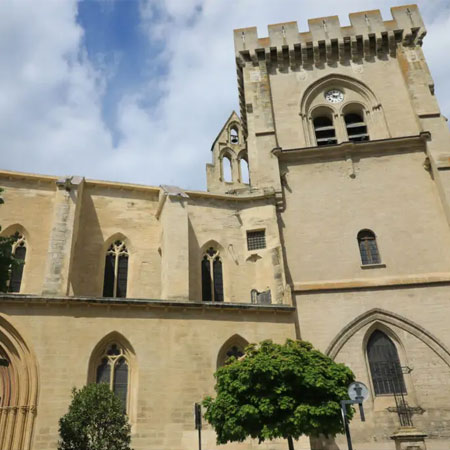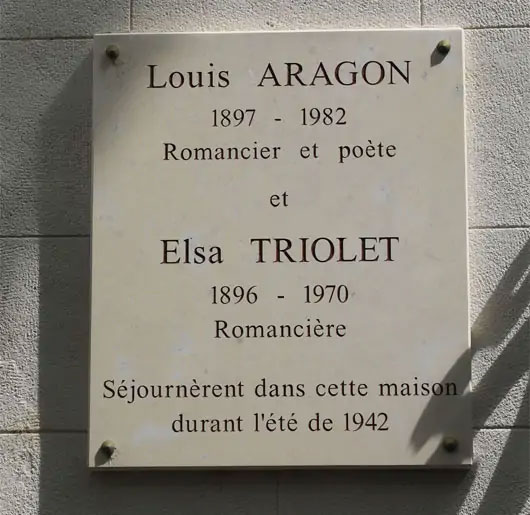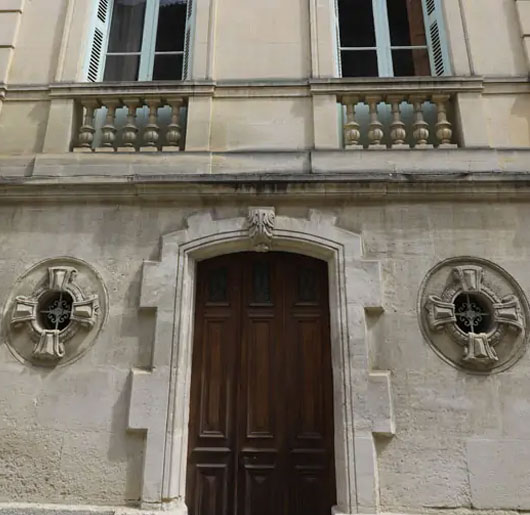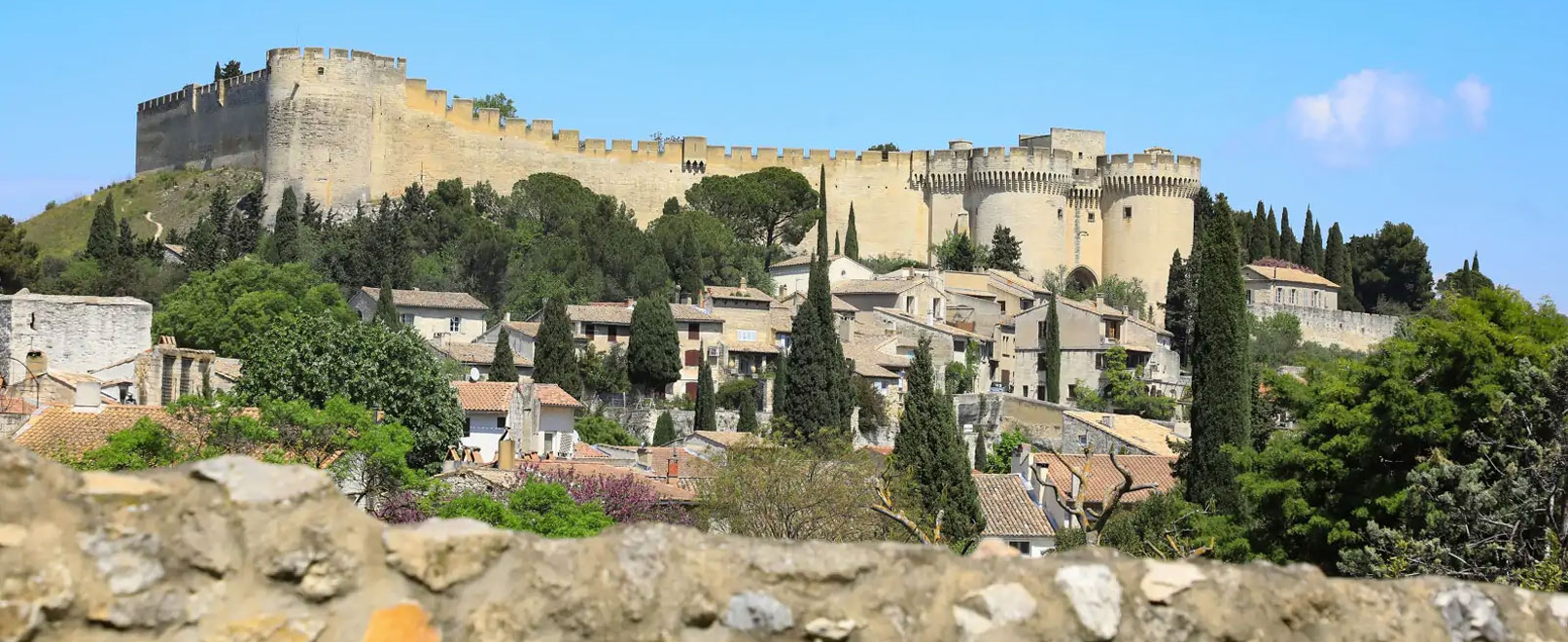
Walking in Villeneuve-lez-Avignon
Between the Kingdom of France and the Papacy
On the right bank of the Rhône, Villeneuve-lez-Avignon stands proudly opposite Avignon. A former border town and fortress of the kingdom of France, stronghold of Philip the Fair, the city with royal status has long embodied a counter-power to the papacy. As the place of residence of the cardinals of the pontifical court of Avignon, then a holiday place for the nobility and the grande bourgeoisie, Villeneuve-lez-Avignon is full of an exceptional heritage. Between manor houses, military sites, cloisters and liveries of cardinals, it has maintained all of its grandeur. Here is a beautiful springtime itinerary for discovering it in one day.
Duration:
1 day
Type:
Visit
The Saint-André Abbey
a floral, cultural and architectural haven of peace
Today maintained by the descendants of Gustave Fayet – Marie and Gustave Viennet – this private estate, restored at the start of the 20th century by Elsa Koeberlé, behind its walls holds the 18th century abbey palace, decorated with beautiful green spaces, lookouts and remains of 11th and 12th century churches.
In the lower area, the flowers are already beginning to face upwards, promising an explosion of colours in the coming weeks. Between the pond of water lilies, the wisteria of the Pergola and the green hedges, you can relax on comfortable deckchairs while admiring a breathtaking view of Avignon, the Popes’ Palace, the Alpilles and the Philip the Fair tower.
Next, let yourself to be charmed by the exhibition on André Chamson, father of Frédérique Hébrard, author of “La demoiselle d’Avignon”, before setting out to explore the wild terraced garden. Up there, the small Sainte Casarie chapel, surrounded by olive trees and Mediterranean plants, marks the summit of Mount Andaon.
The whole space is a true ode to the poetry and beauty of nature, and a must for your next getaway in the region.
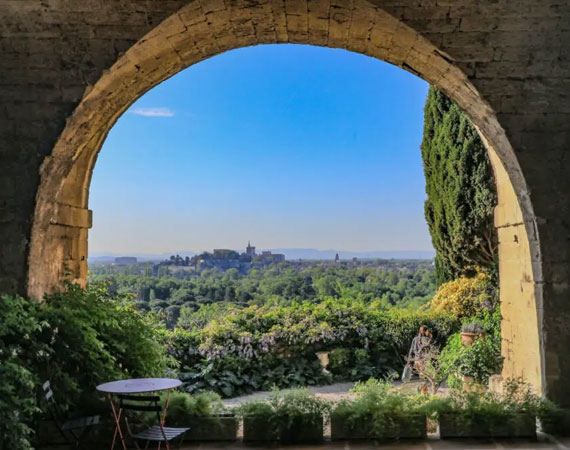

Note
4 experiences in the gardens (workshops, yoga, drawing, night visits) and various entertainment (readings, musical ensembles, exhibitions within the walls of the Palace and under the vaults) are organised until autumn.
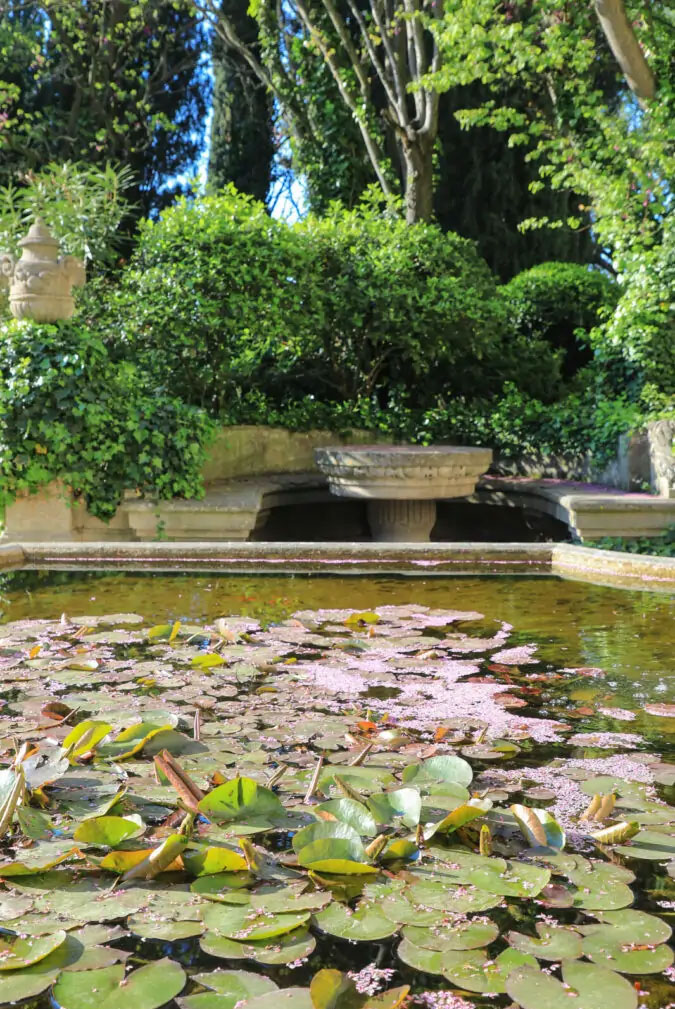
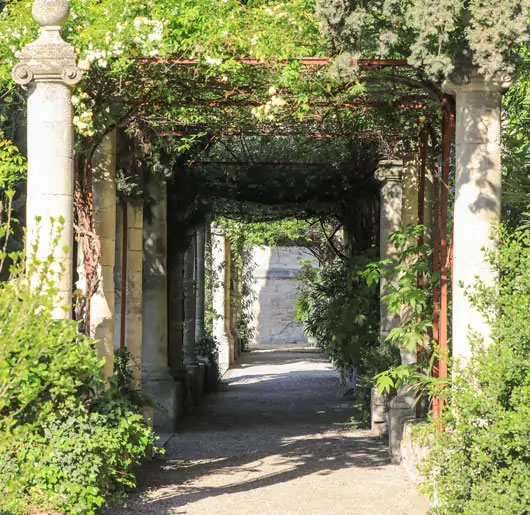
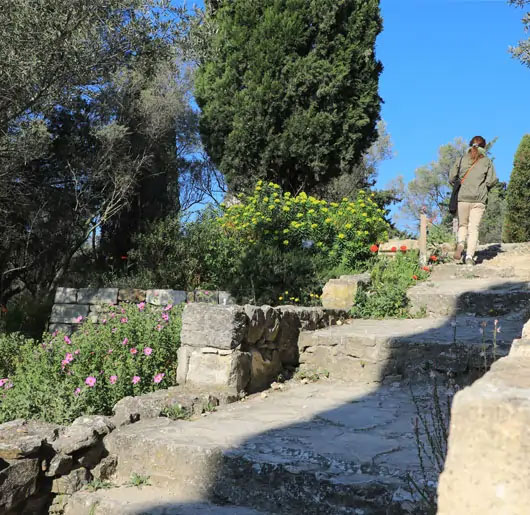
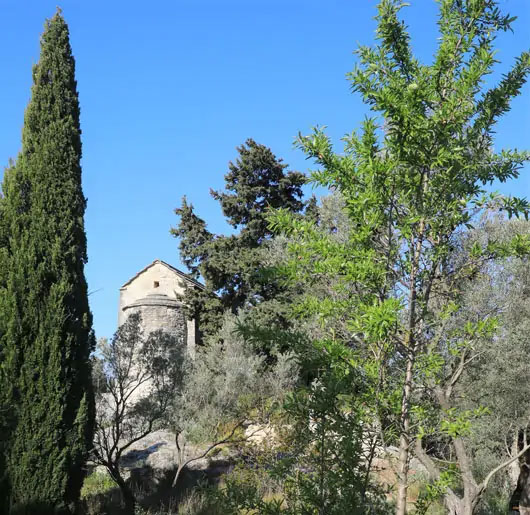
Saint André fort
Monumental towers to symbolise royal power!
Opposite the entrance to the Abbey estate, the Saint André fort welcomes you for free or guided visits (recommended, as they are very informative!). Built under Philip the Fair, then king of France, this fort is the origin of Villeneuve-les-Avignon. While the houses have today given way to a natural garden – the site is an LPO (bird protection league) refuge – the ramparts, walkways and towers run through each other and offer a 360° panorama of the plain to Ventoux, the Rhône road and Avignon. Throughout history, the fortress served in turn as a prison, a hospital for injured soldiers and as a garrison. In the 14th century, it brought together all the defensive architecture of the period (machicolations, deadfalls, arrow slits). Although it is empty today, its walls can still be read and explained by the expert eyes of the guide for a lively and fascinating visit. There are many signs of wear, messages and drawings engraved on the stones, remaining as testimonies offered to history. Peculiar to the fort is a gothic style that the king also wanted inside the towers themselves. Cross-ribbed vaultings, sculpted bases – the site is filled with historical details which are sometimes tragic and sometimes mystical. One to see!
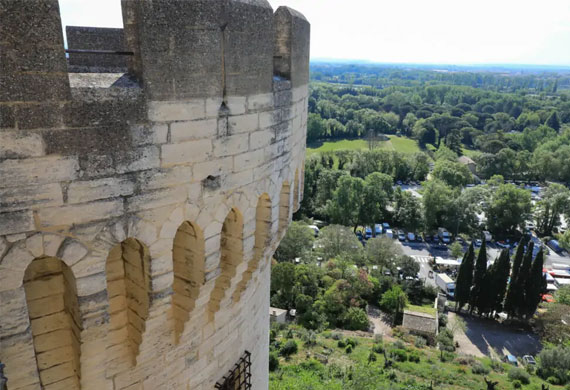

Did you know?
Property of the National Monuments of France, the fort regularly offers exhibitions and themed events (fr).
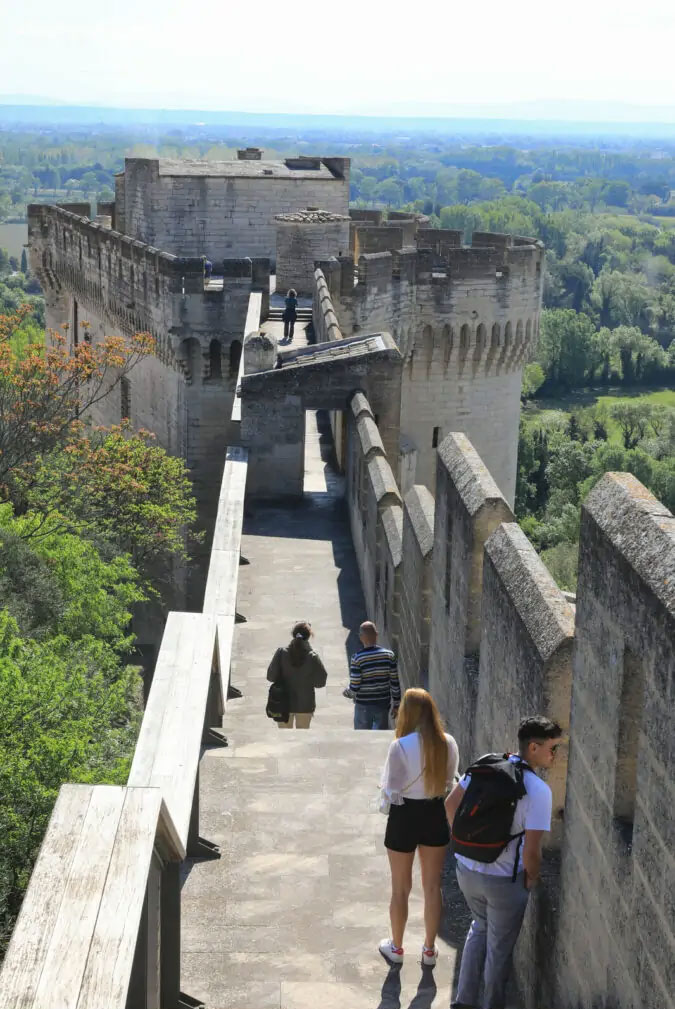
Expert voice
A period of glaciation took place at the end of the Middle Ages, from the end of the 17th to the beginning of the 18th century. During this period, the Rhône was partially covered with ice and was diverted over 900 metres towards Avignon.
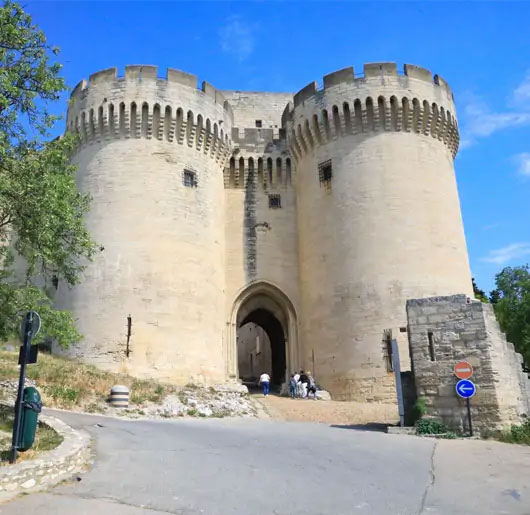
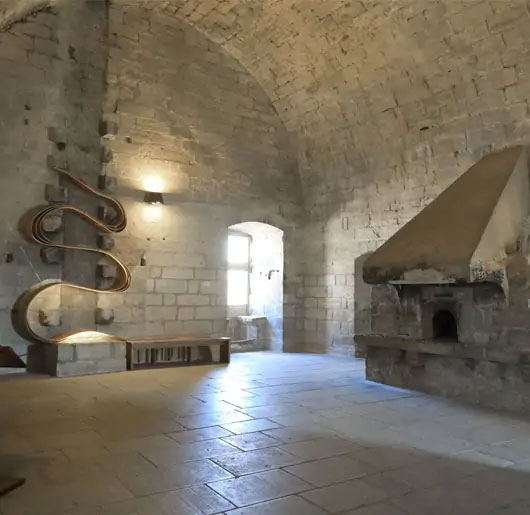
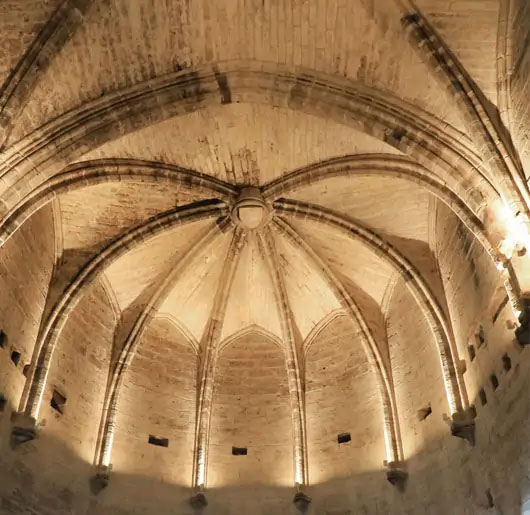
Local life
Every Thursday is market day in Villeneuve-lez-Avignon, in the main square at the entrance to the town, where the flea market takes over on Saturday morning and attracts many visitors. These two quality events are very popular with local people.
People also come to Villeneuve for lunch, to visit its small shops or simply to walk through its narrow streets, around the fort or along the canal. Many premises offer varied menus (French, vegan or foreign cuisine, wine bars) and seating on their terrace. On sunny days, relaxing in the town centre is without a doubt very nice for pedestrians, and a popular outing!
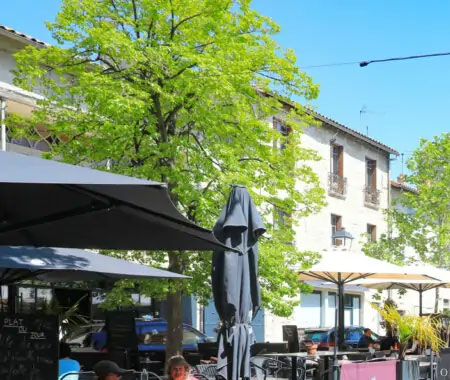
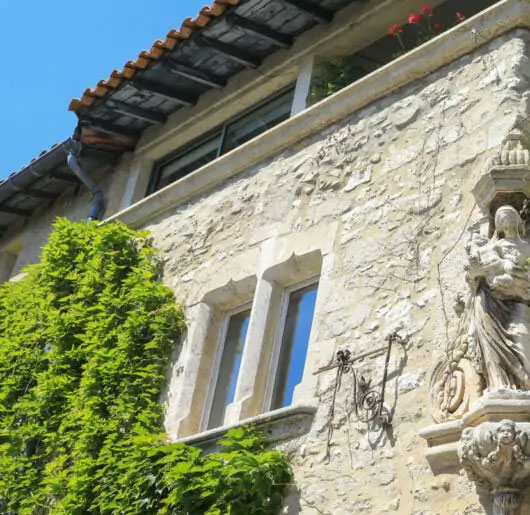
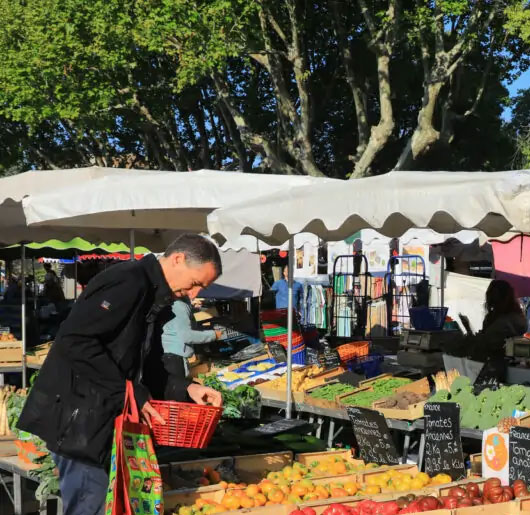
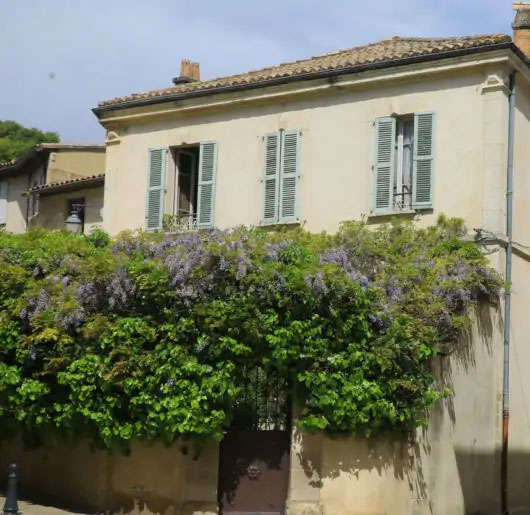
Philip the Fair tower
A lookout post on the Rhône
Erected at the end of the 13th century by Philip the Fair, the tower of the same name was located at the other end of the Avignon Bridge before its arches were removed. At the time, it controlled one of the most important crossroads of the medieval Midi region, arising from river commerce on the Rhône, a true natural border between the Kingdom of France and the country of France in the hands of the Germans and then the Popes.
Originally two stories, “the Large Tower at the End of the Bridge” was completed with a watchtower and flanked by a home for the governor and buildings for the garrison. From its summit, there is an exceptional view of Avignon and the Popes’ Palace, the arm of the Rhône and the Ventoux.

Note
A film recreating the crossing of the bridge in 3D was created in 2014. It can be viewed, along with other documentaries on the history of the Tower, in the room on the ground floor. A sound game is also provided for children.
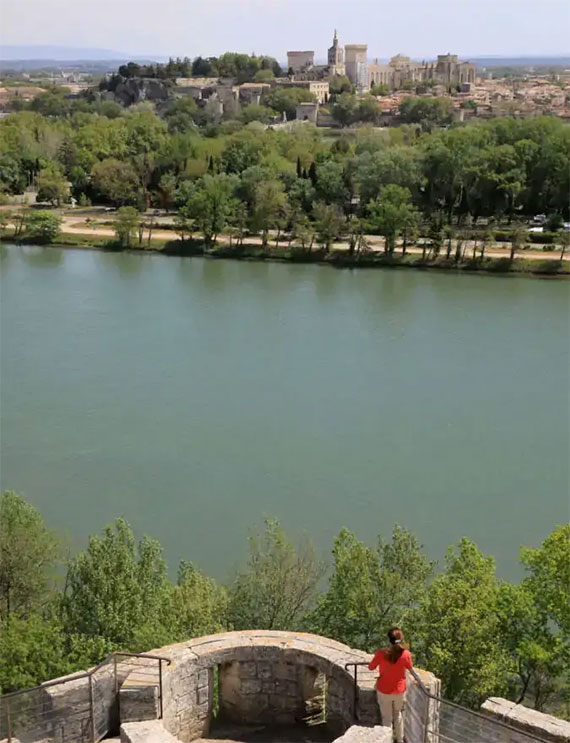
From the hill of Mourgues towards the town centre
The final stage of this first day of the visit leads us to discover the town centre from the hill of Mourgues. All around this small Mediterranean forest, on this rock, are the remains of the palace of Clement VI, formed at the time of a succession of liveries on 30 hectares which had nothing to envy of the size of the Palace of the Popes! Opposite, the tower of the former palace of the Cardinal de Giffon in the town centre, stands over all the roofs.
Like Aragon and Elsa Triolet, many artists lived in Villeneuve in the 18th and 19th centuries. Both very inspired by the local heritage, here she wrote “Les amants d’Avignon”, and Aragon wrote “Le médecin de Villeneuve”. At the bottom of the main street of the village is the current church, housed in an old monastery whose cloister can still be visited. Next to it, opposite the Town Hall, the Pierre de Luxembourg Museum exhibits masterpieces of religious pictorial art, and in particular the very prestigious “coronation of the Virgin”, which brings together the whole medieval universe.
